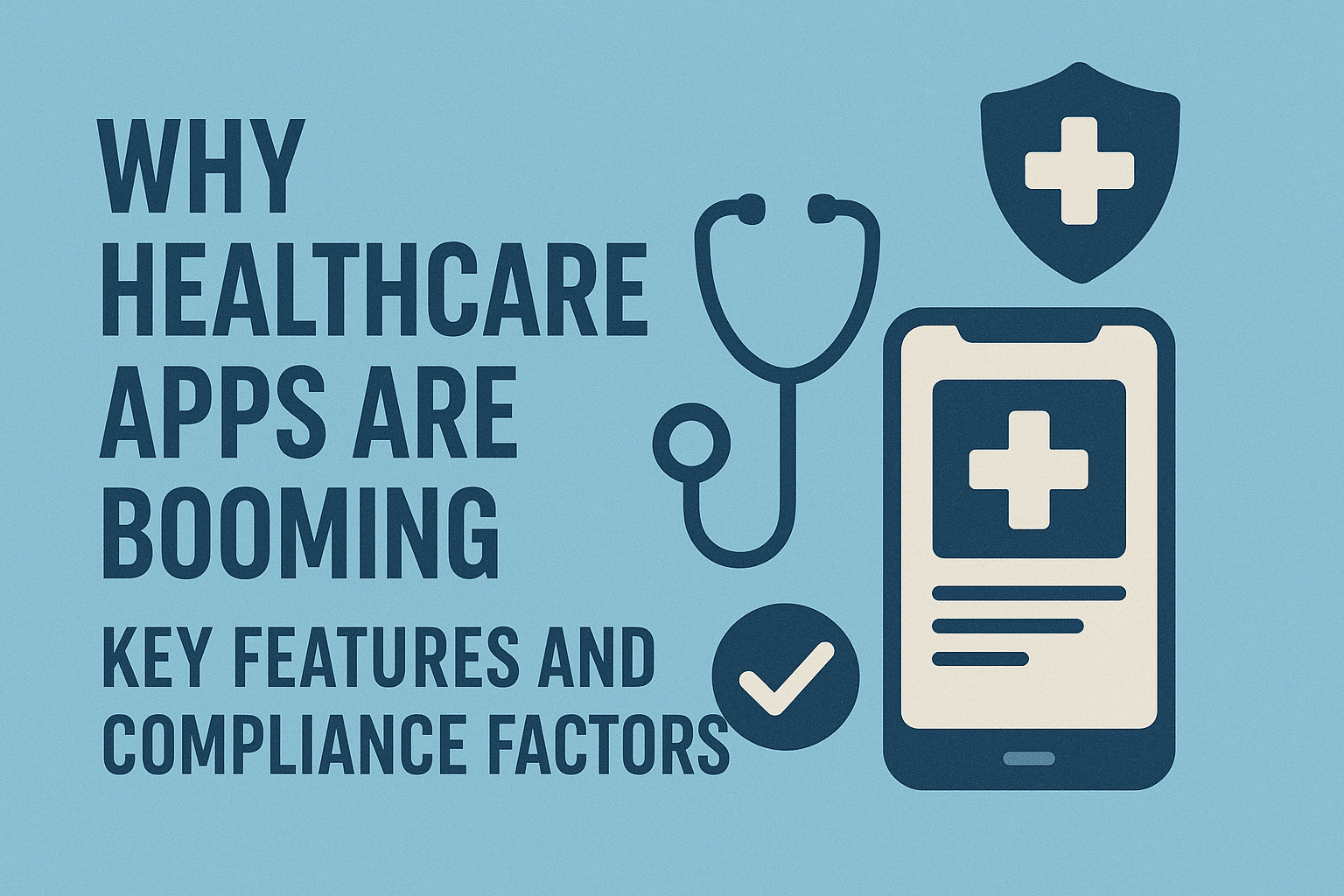Healthcare apps have quietly moved from being “nice-to-have” tools into everyday essentials. From booking doctor appointments to tracking blood sugar, people now rely on apps to manage their health more actively. The worldwide movement towards digital healthcare is not merely a temporary fad but it illustrates how patients, doctors and healthcare providers are adjusting to convenience and improved accessibility. However, the growth of healthcare applications is propelled by two key factors mainly robust functionalities and rigorous compliance requirements.
Why Healthcare Apps Are Booming
The main reason is demand. Patients seek quicker, simpler access to healthcare services, and apps offer that ease right at their fingertips. Instead of waiting for weeks for appointments or dealing with long phone calls, people can now consult a doctor online within minutes.
An important aspect is the expansion of the wearable technology. Apps that sync with smartwatches or fitness trackers offer users real-time updates about their health. Apps can alert a person if their heart rate is irregular or prompt them to take a stroll after prolonged sitting. These personalized nudges make healthcare feel more proactive than reactive. Of course, the COVID-19 pandemic accelerated adoption. With restrictions on physical visits, telehealth apps became a lifeline for millions. What started as a necessity has now become a preferred option, because people realized how convenient it is.
Key Features That Define Successful Healthcare Apps
Not all healthcare apps are created equal. The ones that stand out usually share a set of core features designed to improve user experience and trust. A key aspect is a design that is easy for users. Healthcare can already feel overwhelming, so apps need to be simple to navigate. An unstructured interface or ambiguous guidelines might discourage patients from using them at all.
Next is integration with wearables and medical devices. Apps that connect to devices like glucose monitors or heart-rate sensors deliver real-time updates, giving both patients and doctors actionable data. Another critical feature is secure communication. Patients require secure methods to communicate personal health information, whether through video consultations or messaging platforms. Apps with built-in chat, file-sharing and prescription support add real value. And let’s not forget personalized dashboards. Individuals seek applications that cater to their specific requirements, whether it involves monitoring medication routines, dietary plans or progress in recovery. Customization improves the app’s interaction, increasing extended usage.
The Compliance Factors Driving Trust
If features attract users, compliance is what builds long-term trust. Healthcare is sensitive by nature, and without strict safeguards, apps risk both legal trouble and a loss of credibility. A well-known standard in the United States is HIPAA (Health Insurance Portability and Accountability Act). It sets rules on how patient data must be stored, shared, and protected. Applications that fail to comply with HIPAA regulations may incur significant penalties, as well as harm to their reputation.
In Europe, compliance with GDPR (General Data Protection Regulation) is equally critical. GDPR mandates clarity on the collection and usage of data, empowering patients with authority over their information. For global healthcare apps, following both HIPAA and GDPR is non-negotiable. Along with these, common practices include data encryption and secure cloud storage. Patients require confidence that their private health information will not be compromised in a security breach. Regular security evaluations and multi-factor authentication help strengthen trust.
Balancing Innovation with Regulation
The real challenge for healthcare app developers is balancing innovative features with compliance to regulations. Too much focus on compliance without user-friendly features makes apps feel rigid and unhelpful. Conversely, emphasizing eye-catching features without implementing security protocols can result in catastrophe. The top apps succeed in providing both user-friendly experiences combined with robust security.
Conclusion
Healthcare apps are booming because they solve real problems: they make care faster, more personal, and more accessible. Through elements such as wearable compatibility, customized dashboards, and safe messaging, they are transforming how individuals interact with healthcare. Simultaneously, adherence to regulations like HIPAA and GDPR protects patient information, which is essential for maintaining trust. As technology progresses, healthcare applications will increasingly strengthen, provided they uphold a balance between innovation and the responsibility of ensuring patient safety.
